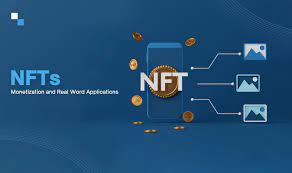In the ever-evolving digital landscape, a transformative wave is reshaping the concept of ownership. Enter the realm of digital collectibles, a frontier where scarcity meets technology to create a new era of possession. In this article, we delve into the fascinating world of redefining digital collectibles, exploring how these unique assets are revolutionizing the way we perceive, trade, and cherish items in the digital sphere.
The Evolution of Collectibles
Traditionally, collectibles have been tangible objects—rare coins, stamps, or baseball cards—that enthusiasts sought to possess. However, the digital age has given rise to a paradigm shift. Digital collectibles, often known as NFTs (Non-Fungible Tokens), have emerged as a novel form of ownership, allowing individuals to collect and trade unique, verifiable assets in the virtual space.
Non-Fungible Tokens (NFTs) Explained:

At the heart of redefining digital collectibles lies the concept of Non-Fungible Tokens. These blockchain-based tokens represent ownership of a specific digital asset and are indivisible, provably scarce, and easily transferable. Whether it’s digital art, virtual real estate, or even moments in time, NFTs provide an immutable record of ownership, granting a new level of authenticity to digital collectibles.
Digital Art and Collectibles:
The art world has witnessed a profound transformation with the advent of digital collectibles. Artists are now able to tokenize their creations, enabling collectors to own a unique piece of digital art. This shift not only empowers creators but also democratizes access to art, fostering a global community of digital art enthusiasts who can truly own and trade their favorite pieces.
Gaming and Virtual Assets:
In the realm of gaming, digital collectibles have become a cornerstone of virtual economies. From rare in-game items to unique characters, players can now truly own and trade their digital possessions using NFTs. This has created a new dimension of value within the gaming ecosystem, where virtual assets are as coveted and traded as physical collectibles.
Real-world Applications:

Beyond the digital and gaming realms, NFTs have found applications in diverse industries. From tokenizing real estate to certifying ownership of luxury goods, the versatility of NFTs is expanding the horizon of what can be considered a collectible. This innovation is not only redefining ownership but also opening up new possibilities for businesses and individuals alike.
Challenges and Future Outlook:
While the world of digital collectibles is filled with promise, challenges such as environmental concerns and issues of copyright need to be addressed. The industry is actively working towards sustainable solutions and greater inclusivity. The future of digital collectibles promises continued growth, innovation, and a more interconnected global community of collectors.
Conclusion:
Redefining digital collectibles is not just a technological evolution; it’s a cultural shift in how we perceive and value digital assets. As we navigate this exciting frontier, the fusion of blockchain technology and digital creativity is ushering in a new era of ownership—one where the possibilities are as boundless as the digital realm itself. Embrace the future, where digital collectibles are rewriting the narrative of possession and creating a more inclusive and interconnected world of ownership.


